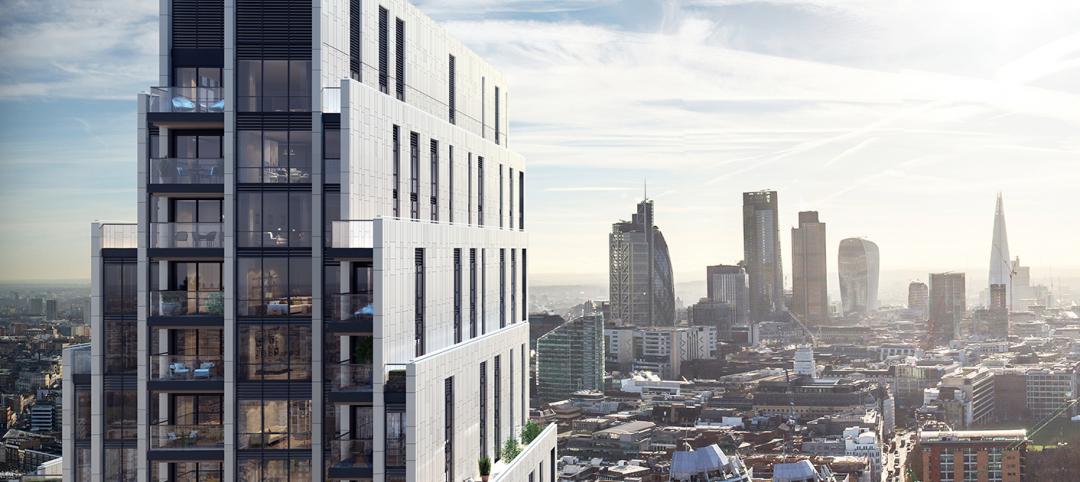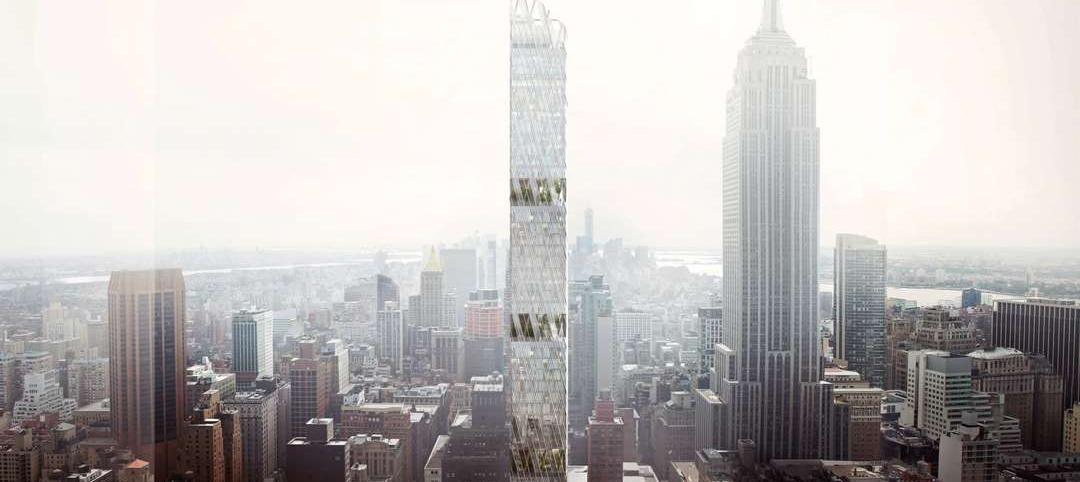Park Tower, a newly planned office high rise in San Francisco, has many architectural flourishes, like a three-story lobby and expansive views of San Francisco Bay from 70% of its 43 floors.
But the amenities that set this 605-foot-tall building apart are its 50,000 sf of outdoor and open spaces that include 14 skydecks (one every three floors) and large terraces on its 12th and 28th floors. Facebook is leasing the entire building’s 756,000 sf of office space.
The skydecks were a design solution to San Francisco’s bulk density guidelines, which require that buildings be set back at certain heights. As it rises, Park Tower’s floor plates reduce from 27,500 sf to 17,000 sf to 12,000 sf.
Ben Kochalski, Principal and Director of JBC West with The John Buck Company, one of Park Tower’s owners and developers, notes that this “wedding cake” effect “presented the opportunity for multiple decks.” As it happened, the high rise’s architect, Goettsch Partners, was working on another building at the time that had only one deck, for which there was considerable demand. Park Tower’s developers concluded that adding more decks might stimulate tenant interest. “We embraced the idea,” recalls Kochalski.
Scott Seyer, AIA, LEED AP, Principal and Senior Project Designer with Goettsch Partners, says the only design restrictions in this building were its height and bulk. However, the terraces (which are 9,000 sf and 6,000 sf, respectively) and skydecks (which range from 700 to 1,000 sf) are not considered by the city to be part of the building’s bulk density. Including so many outdoor areas “was a way of doing something interesting to make the tower stand out, and provide desirable usage.
“We see this as a win-win for the developers, both from a rental and architectural standpoint,” says Seyer. (The skydeck and terrace spaces are factored into the rental agreement with the tenant.)
Kochalski sees Park Tower’s design as part of a larger trend toward “convergence of hospitality, office, and residential.” As amenities like these become standard, “the challenge is to fit out the space so it can change to meet different tenants’ needs. Flexibility is key.” He points to another of his firm’s projects that can add cold storage if a tech company leases the space.
Having so many skydecks and terraces at Park Tower, however, presented some issues. Kochalski said his firm consulted with wind experts to figure out how wind would hit the building horizontally and vertically at different heights. Part of the design focused on getting the appropriate glass height for the outdoor spaces, anchoring the exterior lighting, and establishing minimum weight standards for outdoor furniture and equipment.
Seyer adds that calculating the ROI for Park Tower’s amenities factored in the healthier environments they provide for occupants. “We’re seeing this demand for outdoor access on almost every project we’re working on today,” he says.
Kochalski concedes that there’s a point of diminishing return on amenities, and where that lies depends on how much additional capital is needed, what’s the yield on cost, and where current rents are. “But sometimes you need to push against all that to be competitive,” says Kochalski.
Click here to return to the "Mega Amenities" Game Changer story
Related Stories
Multifamily Housing | Apr 28, 2015
Mace and Make work on London's 40-story residential tower
The tower is one of six residential high-rises planned near London’s City Road, which is undergoing a mini construction boom.
High-rise Construction | Apr 23, 2015
Size matters in NYC, where several projects vie for the city’s tallest building honor
The latest renderings of 217 West 57th Street show a tower that would rise higher than the World Trade Center’s pinnacle, when elevations are included.
High-rise Construction | Apr 22, 2015
Architects propose sustainable ‘vertical city’ in the Sahara
Designers aim to make the 1,476-foot tower sustainable, relying on rainwater collection, solar power, and geothermal energy.
High-rise Construction | Apr 17, 2015
Construction begins on Goettsch Partners-designed Nanning China Resources Center Tower
The tower's design is derived from its multiple uses, which include 170,000 sm of Class A office space, 5,000 sm of boutique retail, and a 45,000-sm luxury Shangri-La hotel.
High-rise Construction | Apr 16, 2015
Construction begins on Seattle's Tibet-inspired Potala Tower
Construction on the 41-story Potala Tower in Seattle finally kicked off following a ground-breaking ceremony seven months ago.
High-rise Construction | Apr 6, 2015
Melbourne tower will light up depending on weather
The tower will be illuminated by 164-foot-tall beams of LED light based on weather updates from the Bureau of Meteorology.
Multifamily Housing | Mar 31, 2015
Plans for a new condo tower in New York create a ‘communal ecosystem’ for residents
The conceptual plans for a 700-foot-tall, 65-story condominium tower in New York City were unveiled in early March by its architect, Perkins+Will.
High-rise Construction | Mar 24, 2015
Timber high-rise residential complex will tower over Stockholm waterfront
The four towers, 20 stories each, will be made entirely out of Swedish pine, from frame to façade.
Healthcare Facilities | Mar 23, 2015
Can advanced elevator technology take vertical hospitals to the next level?
VOA's Douglas King recalls the Odyssey project and ponders vertical transportation in high-rise healthcare design.
High-rise Construction | Mar 16, 2015
NBBJ creates 'shadowless' skyscraper concept for proposed UK development
A team of architects from the London branch of NBBJ used computer algorithms to generate a dual-tower design that maximizes sunlight reflections to eliminate the buildings' shadows.

















